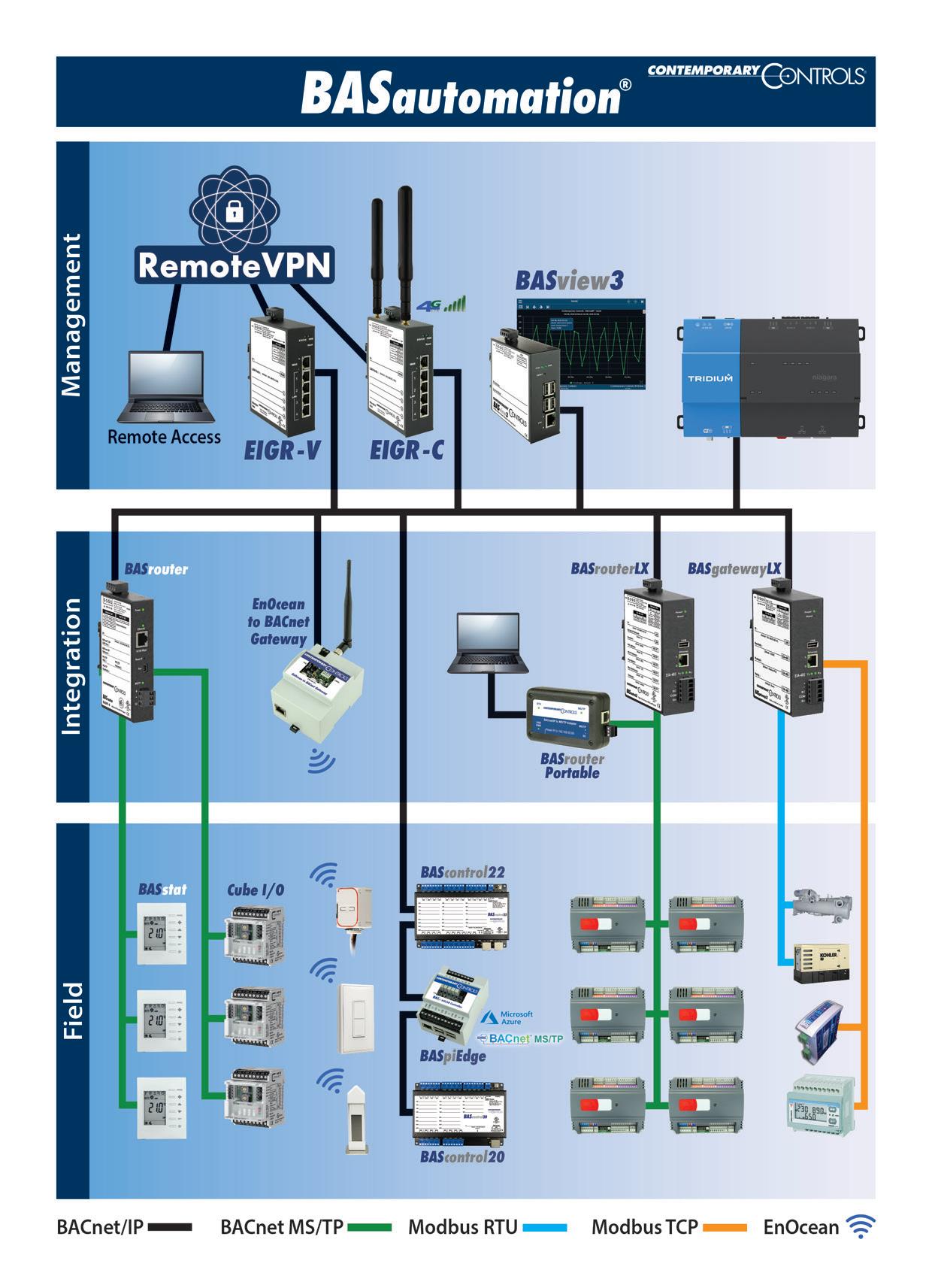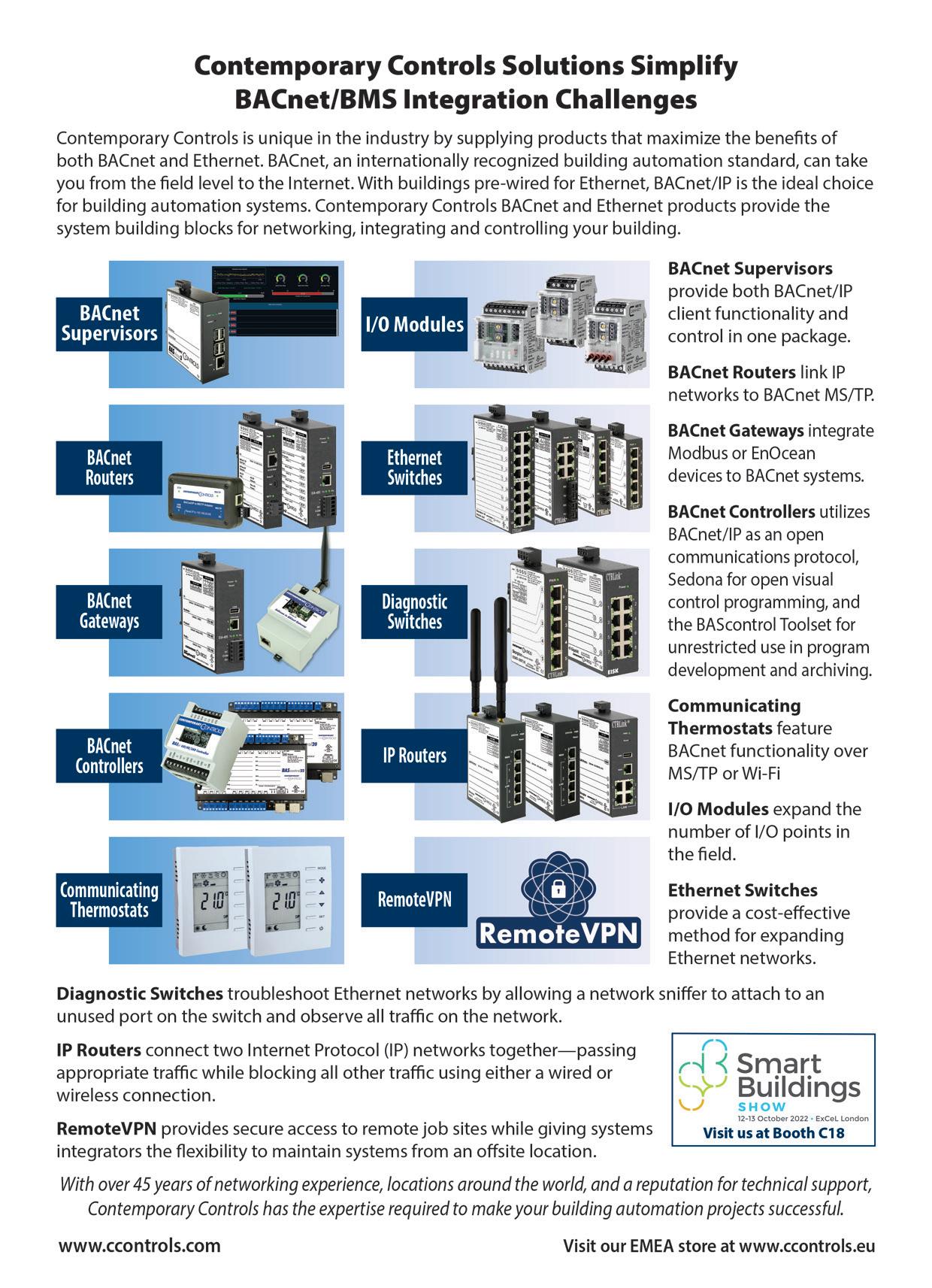
14 minute read
Renewables & Sustainability
What is needed to enable a transition to renewables?
Griff Thomas from GTEC looks at some of the new technologies that optimise solar power generation, making it more valuable for businesses, reducing carbon footprints and helping to balance the grid as demand grows.
Advertisement
T
o meet the momentous challenge of net zero, we need creative thinking and innovative engineering surrounding renewable energy generation and usage. Solar energy is one of the most powerful resources we have as we head towards net zero 2050. The related technology is well-established, producing clean electricity that is critical for decarbonising key sectors, including transport and heating. To remain on track to deliver net zero by 2050, some experts think the UK will need to triple the amount of electricity produced by solar during the 2020s.
To this end, scientists, manufacturers and researchers have been taking huge steps forward to expand solar capacity and power the future. New approaches include floating solar panels, or ‘floatovoltaics’, which have been shown to be 11% more efficient than land panels due to the cooling properties of the water, and improvements to the panels themselves.
Meanwhile, Oxford University spin-off Oxford PV has developed a perovskite-on-silicon cell that set a new world record in 2020 at 29.52% efficiency.
But generating more solar energy is just one side of the coin, we also need to use this renewable energy more efficiently to optimise production and ensure the grid can balance supply and demand – a complex process – made more challenging by the use of energy sources that are highly influenced by the weather and seasons, which can essentially drop-off at a moment’s notice.
Electric Vehicles (Smart Charge Points) Regulations 2021 The electrification of the transport sector brings both challenges and opportunities for innovation surrounding solar energy usage. We must be clever about how we use energy generated from renewable sources because increasing demand for EV charging could cause a surge on the
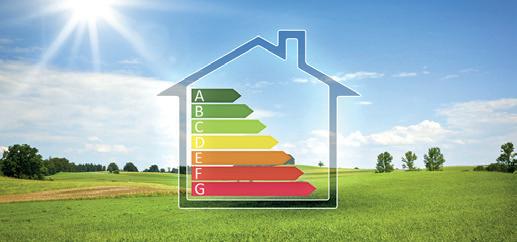
grid if it is not properly managed.
This year, the Electric Vehicles (Smart Charge Points) Regulations 2021 were introduced to ensure that EV charge points sold for domestic or workplace use have smart functionality. These regulations were designed to help even out spikes in demand, while enabling renewable energy to be allocated in a controlled way to keep carbon emissions to a minimum and prevent power outages.
Reducing reliance on the grid Ideally, in this new electric landscape, commercial and domestic buildings would combine rooftop solar with battery storage and an electric vehicle. Using generated electricity is always the most cost-effective option, as export rates under the Smart Export Guarantee (SEG) are far lower than what it costs to buy.
If consumers and businesses can make use of time-of-use tariffs, there are further savings to be made. These new models allow energy providers to better balance supply and demand and prevent surges. End-users can benefit from cheap energy, as low as 7.5p/kWh at the time of writing, if they charge their EV during certain hours of the night, utilising smart technology to help them optimise the process.
The ability to create and store electricity, independent of the grid, is an appealing prospect in the face of rising energy costs and concern about security of supply. However, add in the option to sell cheap energy back to the grid at peak time from an EV battery and it gets really interesting.
Vehicle to Grid (V2G) and Vehicle to Home (V2H) charging Electric vehicles have large batteries which can be up to 10 times more powerful than a standard home battery. As the number of EVs on UK roads continues to rise, our capacity to store surplus and off-peak renewable energy increases. This has led to research into how EVs could be used to store excess power, feed energy back into the grid and even power people’s homes.
Going one step further, bi-directional vehicle chargers are an emerging technology that allows surplus energy to power homes and buildings, known as V2H. Initial trials by British smart energy technology company, Indra, indicate that V2H technology can generate significant savings of up to £200 per month on an average household energy bill.
Indra is running a larger trial this year with 500 participants over a 12-month period to further develop the technology, which holds real promise for consumers looking to play a role in a sustainable future and make a savvy investment.
Driving a skills revolution The important ingredient in making solar, or any renewable technology, work is skilled installers. We need a qualified workforce to help roll out these technologies and educate consumers about the benefits of going green. As an electrician, this presents exciting business opportunities and cements your chosen career as a future-proof one.
Solar PV installation, battery storage and EV charging point installation courses are all designed for existing electrical installers, providing an ideal ‘next-step’ for anyone with an eye to expanding markets.
A different path to power Change is happening, and, in the not too distant future, our reliance on fossil fuels will come to an end. We need a new approach to the way we power our buildings, for the environment and also the pockets of end-users, who are increasingly hammered by rising fuel bills. The current situation is just not viable.
Electricians have an important part to play in helping consumers find a different path to power, one which offers more security while making an important contribution to reducing the UK’s carbon footprint.
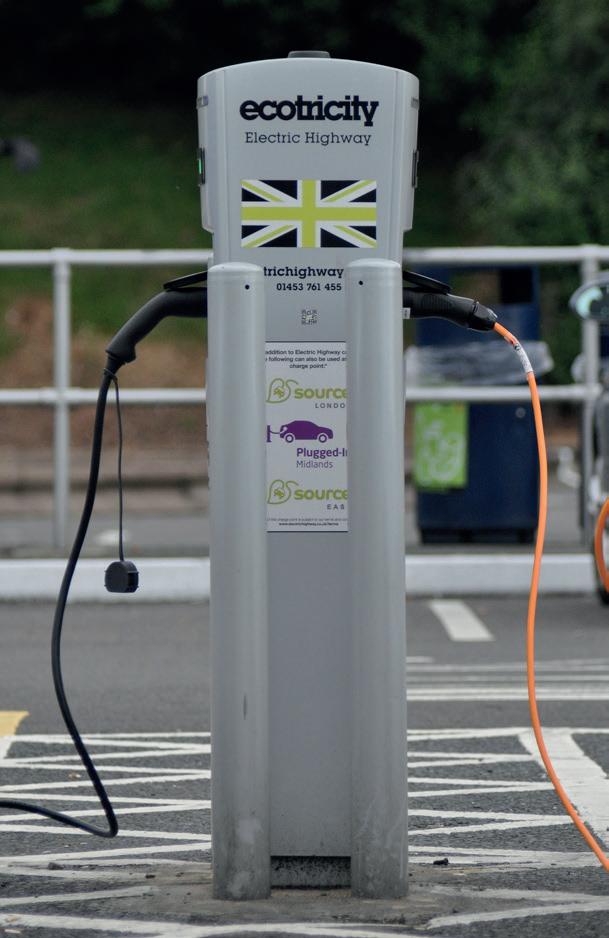
Switching gears to a circular, sustainable approach to modern power management
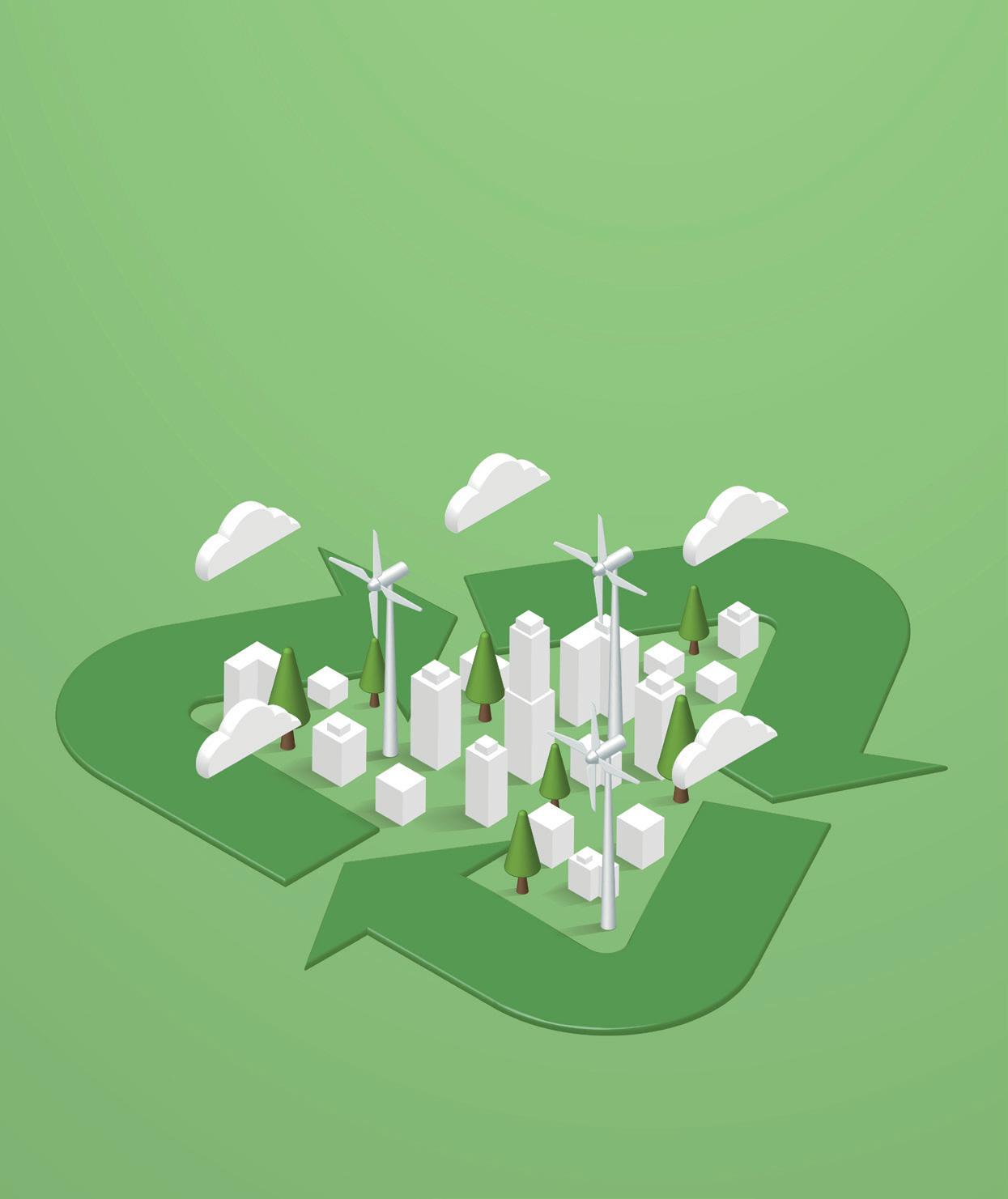
Stewart Gregory, VP, Power Products at Schneider Electric, explains how modern power management technology can benefit from adopting a circular economy.
In the face of climate change, biodiversity loss, and resource scarcity, the need for a green revolution to reduce waste is fundamental to a sustainable future. In recent years, there has been a growing awareness of the circular economy as a way of tackling the industry’s waste challenge. This traditional linear model of production and consumption, often referred to as ‘take-make-waste,’ is simply not sustainable in the long term.
In circular economies, sharing, reusing, repairing, remanufacturing, and recycling are key. By extending the life cycles of products and materials, manufacturers can reduce overall waste, while realising other business-critical benefits, such as lowering costs and increasing uptime.
Solutions that fit the scale of the problems The benefits of moving to a circular economy are numerous, including reducing environmental pollution, creating jobs, boosting the economy, and saving resources. For many manufacturers, the benefits of it are coming to life within vital electrical distribution system upgrades. Traditionally costly and disruptive to operations, by adopting circular economy principles, manufacturers are increasingly retrofitting low-voltage (LV) and medium-voltage (MV) electrical distribution switchgear to ensure the longevity of equipment while also reducing waste.
Innovative approaches now allow manufacturers to replace ageing and obsolete MV/LV switchgear components more easily (e.g., power circuit breakers, contactors, protection relays, and fuse devices) with modern upgrades while maintaining aspects of the original design. Since retrofitting solutions replace only a portion of the existing electrical equipment, fewer waste materials must be processed compared to a complete replacement. For example, retrofitting a circuit breaker unit inside the switchgear avoids manufacturing new cubicles, busbars, cables, and accessories in electrical distribution.
Retrofitting practices can include reusing switchgear housings and accessories, such as plugs, lights, LV switches, and extra LV cabinets and preserving viable cables and wires. Where components are obsolete, they can be refurbished or recycled. Retrofits minimise and simplify construction work resulting in faster installation, less human error, and fewer hours of costly production downtime. Compared to installing new equipment, retrofitting switchgear can result in environmental and cost savings of between 40% and 65%.
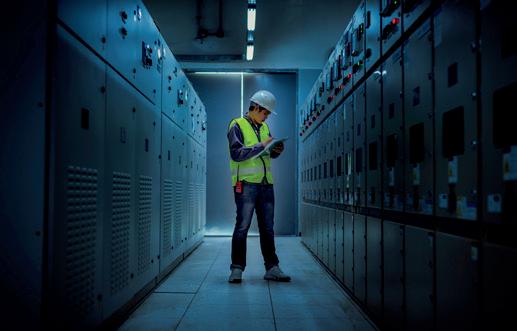
Circular-inspired modernisation; why now? Our urgent need to address climate change is just one of the convincing reasons manufacturing must favour such circular approaches. The likelihood of unplanned and costly downtime increases daily as internal electrical systems are put through their paces. In addition, as the global utility power supply becomes more unstable, internal electrical systems are subjected to more wear and tear. Alongside issues such as equipment phase-outs, rising maintenance costs and new regulatory requirements, modernisation is more often a question of when – not if.
In this drive to modernisation, facility owners and managers must juggle competing priorities; the need for cost-effectiveness, optimum uptime, health and safety, and sustainability. All these aspects are relevant when it comes to electrical distribution, the lifeblood of the facility. Malfunctions in the system rupture processes with unplanned downtime, resulting in higher costs and sometimes even threats to safety.
Helping the business with sustainable prevention Prevention is always better than cure. Modernising electrical systems is part of a healthy, preventative strategy that delivers holistic benefits. For example, modernisation should include the digitalisation of assets when retrofitting systems. Equipment upgrades now mean the integration of low-cost sensors connected to the cloud. Feeding equipment data into analytics programmes delivers rich insights that improve performance and efficiency, decrease energy costs, and reduce CO2 emissions.
Crucially, digitalisation as part of a modernisation programme ensures manufacturers can evidence the impact of their efforts, both in terms of sustainability gains and to ensure cost-savings and efficiencies are genuinely being realised.
Manufacturers can realise multifaceted benefits by modernising power systems underpinned by an appreciation of the circular economy. Industrial leaders now view sustainability as an investment. They can realise short and long-term advantages and are hungry to embrace innovative programmes that support waste reduction in all its forms. They are looking for expert partners to bring these ambitious programmes to life in pragmatic and practical ways.
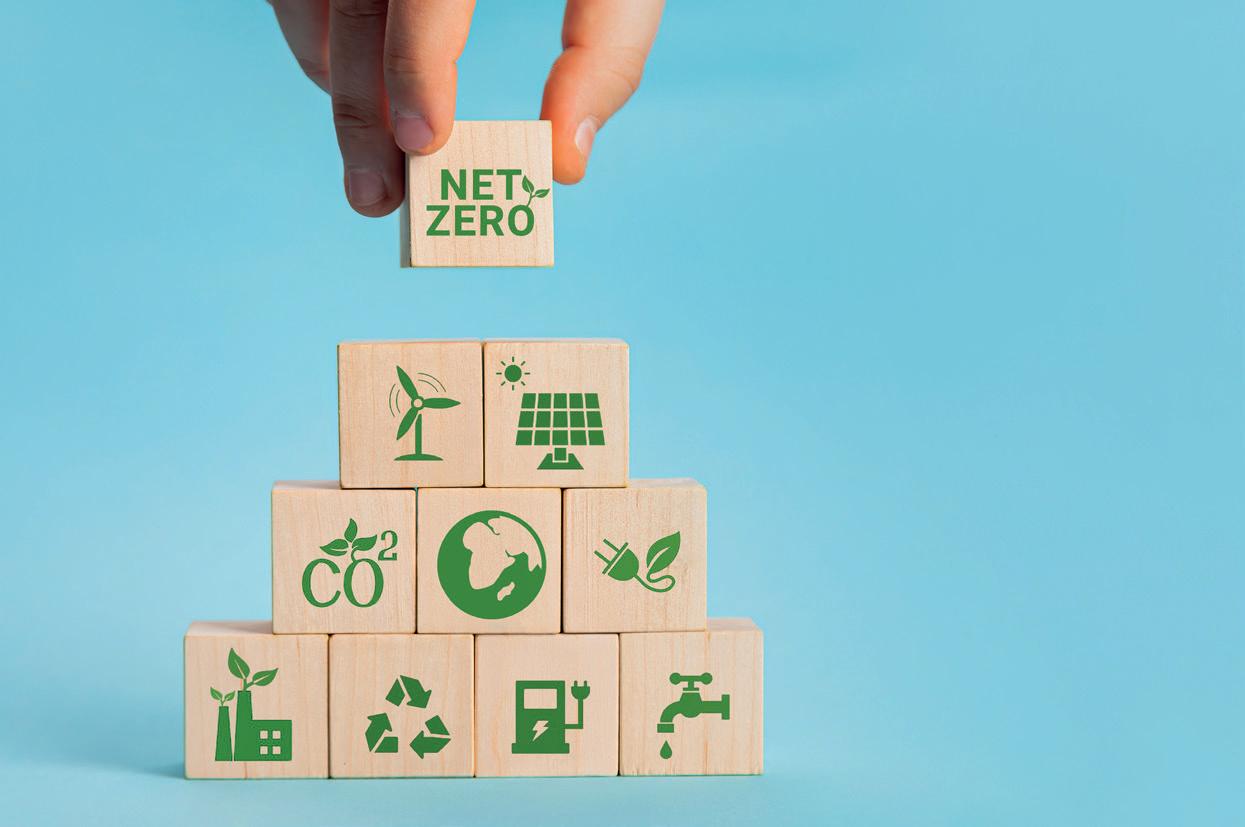
How Western Power Distribution is working towards a net zero future
Mark Shaw, ED Transformation Lead, at Western Power Distribution describes the role the distribution network operator is playing to reduce its own carbon emissions.
estern Power Distribution is playing a key role in helping the W UK achieve net zero. One of the main aims of the company is to enable stakeholders to achieve net zero in line with their own ambitious aspirations.
To achieve this, Western Power Distribution is rewiring our network to provide the capacity required for the connection of low carbon technologies, such as electric vehicle charging points, heat pumps and more localised renewable generation.
But in order to deliver a low carbon network for our customers, it is important that WPD leads the way in improving its own carbon footprint, which in turn will ensure that we as a business can prosper in a net zero society. Only by committing to internal sustainability targets, can we realistically support local communities in achieving their own goals.
Over the past decade, we have made significant strides to be recognised as a leader in tackling climate change, but we will not rest on our laurels and continue to push our sustainability plans further than ever before.
Reaching the Government’s 2050 net zero target will require investment. In our RIIO-ED2 Business Plan we outlined £6.7 billion of investment into our network. This investment will drive sustainability across the communities we serve and within WPD as a company.
Earlier this year we published our sustainability strategy, which builds on
the Business Plan and details our commitments to reducing our business carbon footprint. The headline from this strategy is our pledge to reach net zero by 2028 – 22 years before the Government’s target. There is no doubt that this is an ambitious target, but how do we plan to achieve the necessary reduction in our carbon emissions?
Firstly, we are taking a look at how our company operates. Looking internally at our own practices, we found that more than half (57%) of our carbon emissions come from fuel consumed by our vehicles and generators. By switching to electric vehicles (EVs) and phasing out diesel generators, we can make significant steps towards our net zero target. In fact, we have pledged to replace at least 89% of our existing operational vehicle fleet with EVs by 2028 and we are installing EV charging at all of our operational sites.
In addition to our large-scale commitments, we are introducing greater employee awareness of energy saving, installing motion sensors for lighting, upgrading air-conditioning systems and achieving higher energy efficient ratings in new and refurbished depots.
Importantly, all energy purchased by WPD is produced entirely from renewable sources. However, our plans are not limited to our internal practices. We are working with suppliers and contractors to establish embodied carbon data so we can be sure of purchasing the most sustainable goods and materials, while reducing the impact of our entire supply chain.
We also have major plans for waste. By 2028, WPD will no longer send waste to landfills. Overall, we will be cutting the tonnage of waste we produce by 30% over a five-year period, and our starting point will be to avoid creating waste in the first place. We are working with manufacturers and suppliers to cut the environmental impact and waste of products and services we use. This will include sourcing more goods made from recycled plastics and eliminating non-recyclable plastic. Ultimately, we are aiming to reduce both the use of raw materials and carbon emissions.
By improving our internal business practices we can effectively increase sustainability across the network. Our plans include collaborating and forecasting to support local authorities in reaching their own climate targets. Our RIIOED2 Business Plan shows how we have pledged to help accelerate the adoption of EVs, heat pumps, and other LCTs through helping to co-create, with local authorities, robust and challenging Local Area Energy Plans. We are also appointing dedicated WPD community Energy Engineers and Local Authority Engagement Engineers to help communities navigate the road to net zero.
At WPD, our belief is that sustainability should not be limited to the environment and can be applied to the energy network as a whole. This is where flexibility comes in, as it allows network operators like WPD to manage the peak load without having to invest in additional costly infrastructure to meet a temporary spike in demand.
This recognition that the network needs to be future-proofed led to Flexible Power, which is a portal that allows DNOs to publish flexibility requirements which can then be accessed by flexibility providers. While it started as a WPD innovation project, it is now used by five out of the six DNOs and will only become more vital in ensuring that our customers can make sustainable choices, connecting their own low carbon technologies with capacity never being a barrier.
As the nation’s largest distribution network operator by area, we do not just want to minimise our impact on the natural environment: we want to protect and enhance its biodiversity features for future generations. So, along with the initiatives to make the grid more sustainable, we have several biodiversity commitments including a 10% net gain in plant, insect and animal life at major new project sites and selected grid substation sites.

The decline of our native species’ diversity in the UK is well documented and deeply concerning, and as an industry, it’s important to acknowledge our own physical impact and reassess our practices. This is not always easy, which is why we are working with Wildlife Trusts, Natural England and Natural Resources Wales to identify priority habitats and species. This allows us to support their ongoing work on the ground to maximise the benefit to biodiversity via biodiversity action plans and in the use of natural capital assessment tools.
WPD is committed to sustainability because we truly believe it is the only way forward. As we look towards our 2028 net zero date, the way that we operate will undoubtedly change as we improve our sustainability. This change is something we are embracing as we know that the outcomes for the company, our communities and the planet will be transformational.
